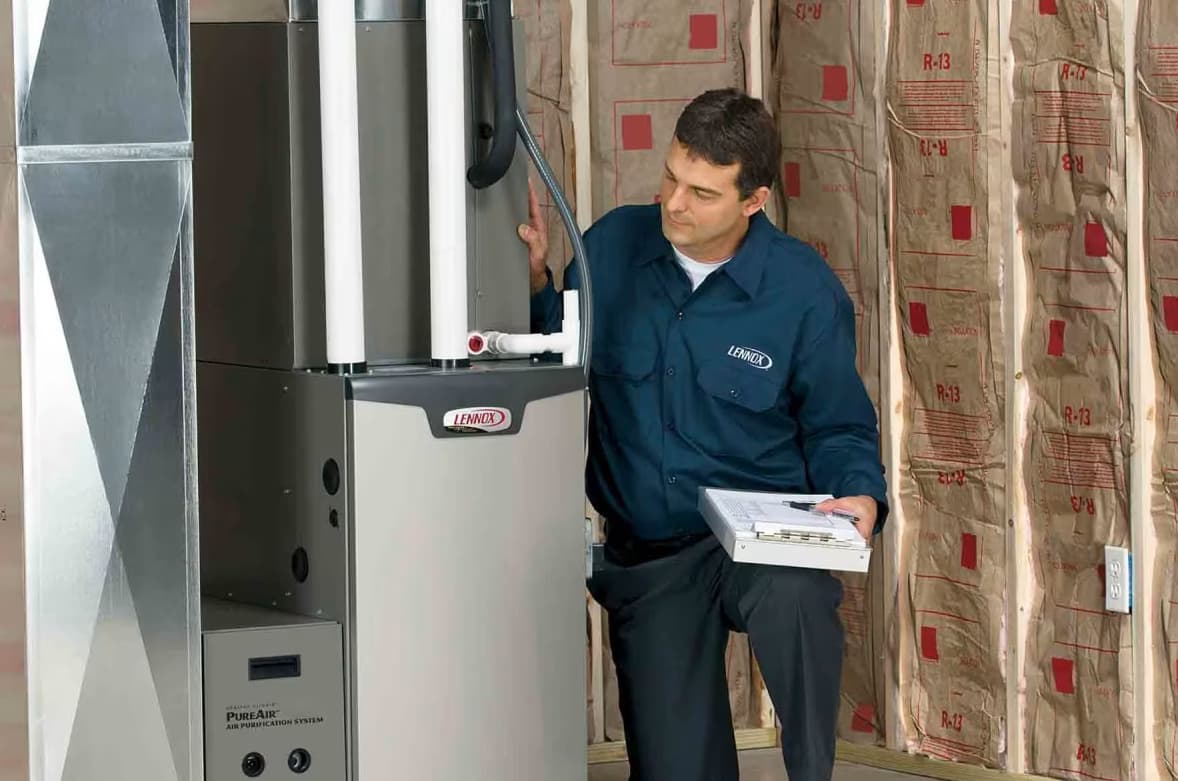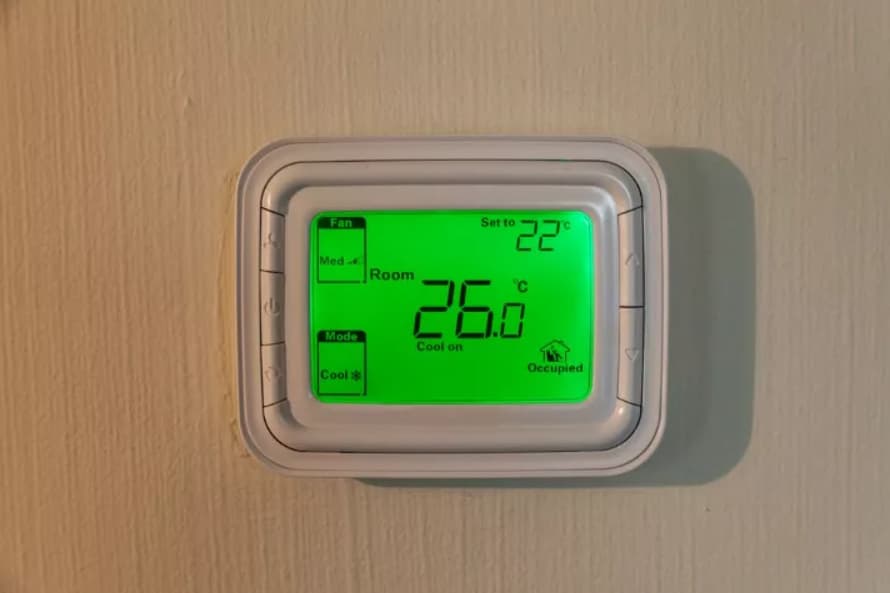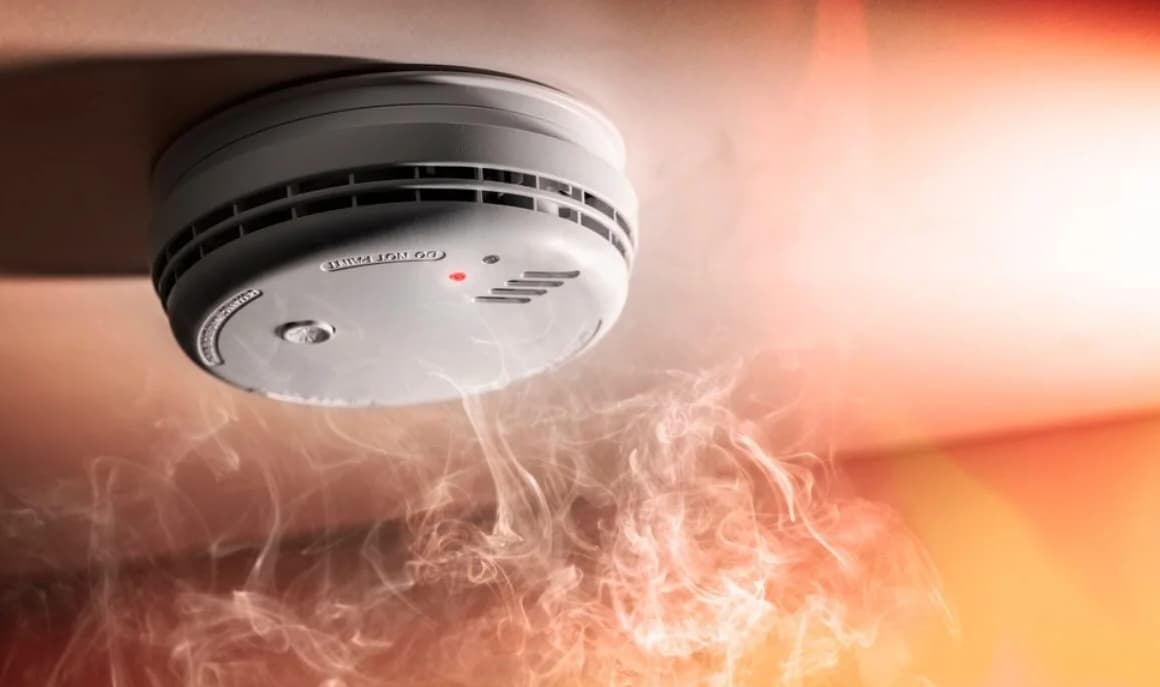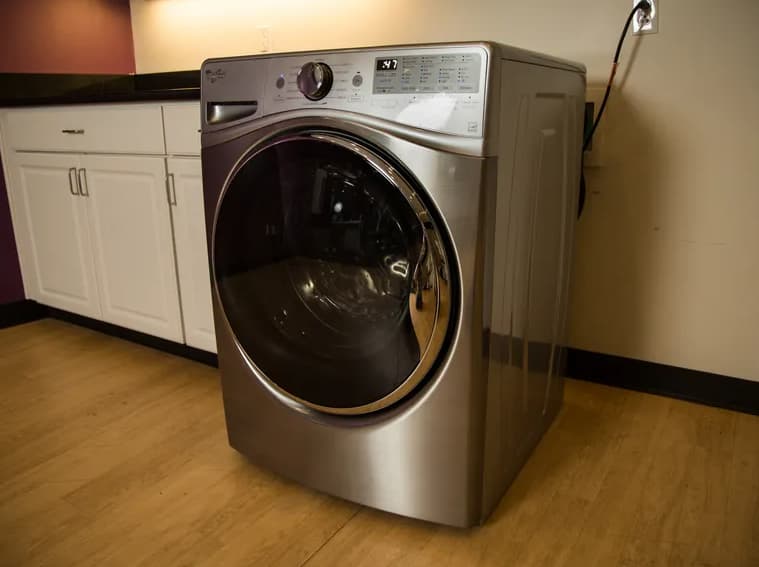Have you noticed your lennox furnace blinking red light and wondered what it means? You’re not alone!
Many homeowners panic when they see that little red light flashing on their furnace, but don’t worry – it’s your furnace trying to tell you something important.
Just like your car’s check engine light, a blinking red light on your Lennox furnace is a built-in warning system.
Your furnace is smart enough to detect problems and communicate them to you through different light patterns. While it might seem scary at first, understanding what these lights mean can save you time, money, and stress.
A lennox furnace blinking red light doesn’t always mean disaster. Sometimes it’s something simple like a dirty air filter or a loose wire.
Other times, it might signal a more serious issue that needs professional attention. The key is knowing how to read these signals and understanding when you can fix things yourself versus when to call in the experts.
Lennox Furnace Blinking Red Light

In this guide, we’ll walk you through everything you need to know about your Lennox furnace flashing red light.
We’ll explain what different blinking patterns mean, show you how to troubleshoot common problems, and help you decide when it’s time to call a professional.
By the end of this article, you’ll feel confident handling basic furnace issues and know exactly what steps to take when that red light starts flashing.
What Does the Blinking Red Light Mean?
Your Lennox furnace uses a smart diagnostic system that communicates through blinking lights. Think of it as your furnace’s way of talking to you when something isn’t quite right.
Normal Operation Signs:
- Steady amber or yellow light = Everything is working perfectly
- Steady green light = Normal operation, no issues
- No blinking = Your furnace is happy and healthy
Warning Signs:
- Blinking red light = Houston, we have a problem!
- Flashing patterns = Different problems have different flash codes
- Multiple lights blinking = More complex issues
The blinking red light is essentially your furnace’s “check engine” light. It’s designed to get your attention before small problems become big, expensive ones. Your Lennox furnace monitors dozens of safety features and operational components constantly. When something goes wrong, it immediately starts flashing a specific pattern to tell you exactly what’s happening.
Why This System Matters:
- Early warning helps prevent major breakdowns
- Specific codes help identify exact problems
- Safety features protect your home and family
- Cost savings by catching issues early
Understanding these signals is crucial because ignoring a blinking red light can lead to:
- Complete furnace shutdown
- Higher repair costs
- Safety hazards
- Uncomfortable cold nights
Common Causes of a Blinking Red Light
Let’s break down the most common reasons why your Lennox furnace might be flashing that red light. Don’t worry – many of these issues are pretty simple to fix!
Thermostat Problems: Your thermostat is like the brain of your heating system. When it malfunctions, your furnace gets confused and starts blinking. Common thermostat issues include:
- Dead batteries (happens more often than you’d think!)
- Loose wiring connections
- Outdated technology that can’t communicate properly
- Sensor malfunctions giving wrong temperature readings
Ignition System Failures: The igniter is your furnace’s “spark plug.” When it stops working, your furnace can’t light the gas, and that red light starts flashing. Signs of ignition problems:
- Clicking sounds without the furnace starting
- Gas smell without flames (call a professional immediately!)
- Repeated startup attempts that fail
Gas Supply Issues: Your furnace needs a steady flow of gas to work properly. Problems with gas supply include:
- Low gas pressure from the utility company
- Clogged gas lines or filters
- Faulty gas valves that won’t open properly
- Pressure switch problems that detect airflow issues
Air Filter Problems: This is the #1 most common and easiest fix! A dirty air filter causes:
- Restricted airflow makes your furnace work harder
- Overheating that triggers safety shutoffs
- Poor air quality throughout your home
- Higher energy bills from inefficient operation
Flame Sensor Issues: The flame sensor makes sure there’s actually a flame burning when gas is flowing. When it gets dirty or fails:
- False readings cause unnecessary shutdowns
- Safety concerns if flames aren’t detected properly
- Intermittent operation that’s frustrating and unreliable
Furnace Troubleshooting: Fixing the Blinking Red Light
Now let’s get hands-on and fix that blinking red light! Don’t worry – we’ll start with the easiest fixes first and work our way up.
Step 1: Check Your Air Filter (Start Here!) This fixes 80% of furnace problems and takes just 2 minutes:
- Turn off your furnace at the thermostat
- Locate the air filter (usually near the blower)
- Pull out the filter and hold it up to light
- If you can’t see through it clearly = time for a new one!
- Replace with the same size filter
- Turn your furnace back on
Step 2: Reset Your Furnace Sometimes your furnace just needs a fresh start:
- Find your circuit breaker labeled “furnace” or “HVAC”
- Turn the breaker OFF for 5 minutes
- Turn it back ON and wait
- Check if the red light stops blinking
- If it works – problem solved!
Step 3: Check Your Thermostat Make sure your thermostat is working properly:
- Replace batteries if it has them
- Check the display for error messages
- Verify temperature settings are correct
- Look for loose wires (call a pro if you see any)
Step 4: Inspect Vents and Registers Blocked airflow causes major problems:
- Walk around your home and check all vents
- Remove furniture, curtains, or rugs blocking vents
- Open all registers completely
- Check outside exhaust vents for obstructions
Step 5: Look for Obvious Problems Do a quick visual inspection:
- Strange sounds like banging or hissing
- Unusual smells especially gas odors
- Visible damage to pipes or connections
- Water leaks around the furnace
When These Steps Work: If your red light stops blinking after trying these steps, congratulations! You’ve just saved yourself a service call. However, keep an eye on your furnace for the next few days to make sure the problem doesn’t come back.
When They Don’t Work: If the red light keeps blinking after trying all these steps, it’s time to move on to professional help. Don’t feel bad – some problems require special tools and training to fix safely.
When to Call a Professional HVAC Technician?
Sometimes the smartest thing you can do is admit you need help. Here’s when to immediately stop troubleshooting and call a professional:
Emergency Situations (Call Now!):
- Gas smell anywhere in your home
- Carbon monoxide detector going off
- Loud banging or hissing sounds
- No heat and outside temperature below freezing
- Electrical sparks or burning smells
Safety-Related Issues: Your safety is worth more than any repair bill:
- Flame sensor problems (gas + electricity = danger)
- Gas valve issues (potential gas leaks)
- Electrical component failures (fire hazard)
- Heat exchanger problems (carbon monoxide risk)
Complex Technical Problems: Some issues require professional expertise:
- Circuit board failures (expensive to replace wrong)
- Motor problems (heavy equipment and electrical work)
- Gas line issues (requires licensing and permits)
- Warranty work (DIY repairs can void warranties)
When Troubleshooting Doesn’t Work: If you’ve tried everything and the red light keeps blinking:
- Don’t keep trying random fixes
- Document what you’ve already done for the technician
- Take photos of error codes or unusual conditions
- Call a reputable HVAC company
What to Expect from a Professional: A good HVAC technician will:
- Diagnose the problem using specialized tools
- Explain the issue in terms you can understand
- Provide options for repair or replacement
- Give you a written estimate before starting work
- Clean up after themselves
Preventative Furnace Maintenance Tips to Avoid Future Issues
Prevention is always better than repair! Here’s how to keep your Lennox furnace running smoothly and avoid that blinking red light:
Monthly Maintenance Tasks:
- Check and replace air filters (every 1-3 months)
- Keep vents clear of furniture and debris
- Test your thermostat settings
- Listen for unusual sounds during the operation
Seasonal Maintenance: Before Each Heating Season:
- Schedule professional tune-up (highly recommended)
- Test your furnace before cold weather hits
- Check carbon monoxide detectors and replace batteries
- Inspect outdoor vents for bird nests or debris
During Heating Season:
- Monitor your energy bills for sudden increases
- Keep outdoor units clear of snow and ice
- Watch for uneven heating in different rooms
- Pay attention to air quality changes
Annual Professional Maintenance: A yearly tune-up should include:
- Cleaning the burners and heat exchanger
- Inspecting electrical connections for safety
- Testing safety systems and controls
- Lubricating moving parts to prevent wear
- Checking gas pressure and connections
- Calibrating the thermostat for accuracy
Benefits of Regular Maintenance:
- Fewer breakdowns and emergency repairs
- Lower energy bills from efficient operation
- Longer furnace lifespan (15-20 years vs 10-15)
- Better air quality for your family
- Maintained warranty coverage
DIY Maintenance Tips:
- Keep the area around your furnace clean and uncluttered
- Don’t store chemicals near your furnace
- Replace air filters regularly (set phone reminders!)
- Know where your gas shutoff valve is located
Furnace Won’t Start – Fix
When your furnace won’t start at all, it’s frustrating and often scary, especially on cold nights. Let’s troubleshoot this step by step:
First Things to Check:
- Thermostat settings – Is it set to “heat” and above room temperature?
- Circuit breaker – Has it tripped? Reset if needed
- Power switch – Look for a light switch near your furnace
- Gas supply – Is the gas valve turned on?
Common “Won’t Start” Problems:
Thermostat Issues:
- Dead batteries (replace immediately)
- Wrong settings (heat mode, proper temperature)
- Loose wires (call a professional)
- Old thermostats may need replacement
Power Problems:
- Tripped breakers (reset and monitor)
- Blown fuses (replace with the same amperage)
- Power switch accidentally turned off
- Electrical connections loose or corroded
Gas Supply Issues:
- Gas valve closed (turn counterclockwise to open)
- Gas meter problems (call the gas company)
- Low gas pressure (professional diagnosis needed)
- Safety shutoff activated (requires reset)
Safety System Activation: Your furnace has multiple safety systems that can prevent startup:
- Flame rollout switches protect against dangerous flames
- Pressure switches ensure proper ventilation
- Limit switches prevent overheating
- Flame sensors verify safe combustion
Step-by-Step Troubleshooting:
- Check thermostat – Replace batteries, verify settings
- Inspect breakers – Reset any that have tripped
- Look for power switches – Make sure the furnace has power
- Verify gas supply – Ensure the gas valve is open
- Wait and retry – Some systems need time to reset
- Document the problem – Note any sounds, smells, or patterns
When to Stop and Call for Help:
- Gas smells (evacuate immediately)
- Repeated failures after following all steps
- Electrical issues you’re not comfortable with
- No improvement after basic troubleshooting
Lennox Furnace Error Codes
Here’s a comprehensive table of Lennox furnace error codes to help you identify exactly what your blinking red light means:
| Error Code | Meaning | Potential Causes | What You Can Do |
|---|---|---|---|
| E200 | Rollout limit switch open | Blocked vents, flame instability | Reset switch, check vents, call pro if unstable flame |
| E201 | Lost communication with blower motor | Power issues, loose wiring, moisture | Check power, call professional |
| E223 | Low pressure switch open | Airflow problems, blocked intake/exhaust | Check vents, call professional |
| E241 | Flame sensor out of sequence | Dirty or faulty flame sensor | Clean sensor or call professional |
| E292 | Blower motor won’t start | Motor failure, electrical issues | Call professional for motor replacement |
| 1 Flash | Flame sensed with gas valve off | Faulty gas valve or control board | Call professional immediately |
| 2 Flashes | Pressure switch closed with inducer off | Faulty pressure switch or control board | Professional diagnosis needed |
| 3 Flashes | Pressure switch open with inducer on | Blocked vents, airflow issues | Check and clear all vents |
| 4 Flashes | Primary limit switch open | Overheating, airflow restriction | Check filters, clear vents |
| 5 Flashes | Rollout switch open | Serious safety issue | Call professional immediately |
| 6 Flashes | Pressure switch system lockout | Multiple airflow issues | Professional service required |
| 7 Flashes | Burners failed to ignite | Ignition system problems | Professional diagnosis needed |
| 8 Flashes | Lost flame multiple times | Faulty flame sensor | Clean sensor, call pro if continues |
| 9 Flashes | Line voltage polarity incorrect | Electrical wiring issues | Professional electrical work needed |
How to Use This Table:
- Count the flashes carefully (they repeat in patterns)
- Write down the pattern you observe
- Find your code in the table above
- Follow the recommended action for your specific code
- Call a professional for any gas or electrical issues
How To Read a Lennox Furnace Error Code?
Reading your Lennox furnace error codes is easier than you think once you know what to look for. Here’s your step-by-step guide:
Locating the LED Light:
- Remove the front panel of your furnace (usually clips or screws)
- Look for the control board (circuit board with wires)
- Find the LED light (usually red, sometimes labeled DS1/DS2)
- Make sure you have good lighting to see clearly
Reading the Flash Pattern:
- Watch carefully – patterns repeat every few seconds
- Count the flashes in each sequence
- Note the timing – fast vs slow flashes matter
- Write it down – don’t rely on memory
- Watch for several cycles to confirm the pattern
Types of Flash Patterns: Single LED Systems:
- Count the number of flashes in each sequence
- Note pauses between sequences
- Each number of flashes means something different
Dual LED Systems::
- Watch both lights simultaneously
- Note which light flashes and when
- Alternating patterns have specific meanings
- Both lights flashing indicate different issues
Important Safety Notes:
- Don’t turn off power while reading codes (clears the code)
- Don’t touch electrical components while observing
- Take photos if possible for reference
- Call pa rofessional if you smell gas at any time
Recording Your Observations: Create a simple note like this:
- Date and time
- Flash pattern (example: “3 flashes, pause, repeat”)
- LED color and location
- Any sounds or smells noticed
- When the problem started
This information is incredibly valuable when calling a technician and can save you diagnostic fees.
FAQs:
- Q: Why is my Lennox furnace blinking red light but still working?
A: Your furnace may be running with a minor issue that hasn’t caused a complete shutdown yet. Common causes include dirty filters, minor airflow restrictions, or sensor issues. While your furnace might still provide heat, the blinking light is warning you that something needs attention. Don’t ignore it – address the issue before it becomes a major problem.
- Q: How often should I check my furnace for error codes?
A: You should visually check your furnace monthly when changing filters. However, you’ll typically notice a blinking red light during normal operation since most people walk past their furnaces regularly. Set a monthly reminder to do a quick visual inspection along with your filter change.
- Q: Can I reset my Lennox furnace myself?
A: Yes! You can safely reset your furnace by turning off the circuit breaker for 5 minutes and then turning it back on. You can also use the power switch near your furnace if it has one. However, if the problem persists after resetting, you need professional help.
- Q: What’s the difference between steady and blinking lights?
A: Steady lights typically indicate normal operation (green/amber) or continuous problems (red). Blinking lights are diagnostic codes that tell you exactly what’s wrong. The number and pattern of blinks correspond to specific issues in your furnace.
- Q: Is it safe to use my furnace when the red light is blinking?
A: It depends on the specific error code. Some codes indicate minor issues where continued operation is safe temporarily, while others signal immediate safety concerns. If you smell gas, hear unusual sounds, or see certain error codes (like flame sensor issues), turn off your furnace and call a professional immediately.
- Q: How much does it cost to fix a blinking red light?
A: Costs vary widely depending on the issue. Simple fixes like dirty filters cost under $20. Professional repairs can range from $150-$500 for common problems like flame sensors or pressure switches. Major component replacements (like motors or control boards) can cost $400-$1,200. Many issues can be prevented with regular maintenance.
- Q: Why does my furnace error code keep coming back?
A: Recurring error codes usually indicate an underlying problem that wasn’t fully addressed. This could be due to incomplete repairs, related components failing, or environmental factors causing repeated issues. Document when the codes appear and call a professional for a thorough diagnosis.
Also Check:
- Goodman Furnace Red Light Blinking
- Ninja Creami Install Light Blinking
- Nutribullet Blinking Blue Light
- Mighty Mule Status Light Blinking
Conclusion:
Dealing with a Lennox furnace blinking red light doesn’t have to be scary or overwhelming. Remember, that little red light is your friend – it’s your furnace’s way of communicating problems before they become major disasters.
Key takeaways from this guide:
- Start simple – check air filters and reset your furnace first
- Know when to stop – gas smells and electrical issues require professionals
- Prevention works – regular maintenance prevents most problems
- Document everything – error codes and patterns help technicians
Your Lennox furnace is a sophisticated piece of equipment designed to keep your family warm and safe.
The diagnostic system with blinking lights is a testament to how well-engineered these systems are.
By understanding what these signals mean and knowing how to respond appropriately, you’re taking control of your home comfort system.
Most importantly, never ignore a blinking red light. Whether it’s something simple you can fix yourself or a complex issue requiring professional help, addressing problems early saves money, prevents discomfort, and ensures your family’s safety.
Remember that regular maintenance is your best defense against unexpected breakdowns.
Schedule annual professional tune-ups, change filters regularly, and keep your furnace area clean and unobstructed. These simple steps will minimize the chances of seeing that blinking red light in the first place.
When in doubt, don’t hesitate to call a qualified HVAC professional. Your safety and comfort are worth the investment, and a good technician can often prevent future problems while fixing current ones.



